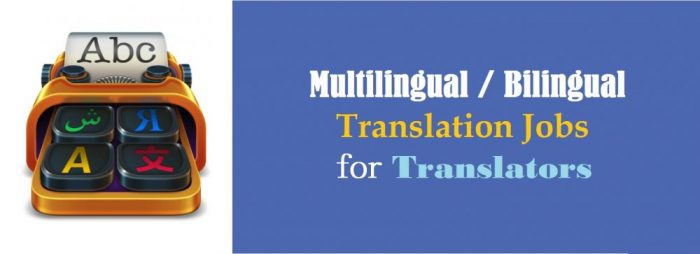English to Bengali Translator: Are language translators really worth?
English has developed over the course of 1,400 years approximately. It is the third most common native language spoken in the world. It is the only major language without an academy to guide it.
Bengali is a language spoken in northeastern part of India, predominantly in the state of West Bengal. It is a scheduled language out of the 22 such languages of India. It is seventh most spoken language in the world.
English and Bengali are just two of the many languages of the world. Do you think these languages have an effect on the daily needs of people? Exactly, it does affect work life of many individuals.
Need For Language Translators
To withstand in today’s fast-paced global market, companies must chalk out the plan to maintain growth fuelled by effective international networks, local market strategies and solutions designed to meet the needs of their customers.
It means one needs to communicate with partners, clients and employees along worldwide in a variety of languages. Language translation helps companies to improve communications in multiple languages.
Language translators bridge the gap between multilingual communications among organizations both internally and externally. These are designed to obtain specific business objectives.
Today’s Scenario
Due to increased popularity and internet usage around the world, it has made businesses realize that it is not necessary that everyone can speak and write English or any other language as fluently as the English do. Thus, the necessity of translation services is unavoidable.
What Is Language Translation?
Automatic language translation is the use of software (computer program) to translate input text from one language to another language. Any language relies on the meaning and context, and therefore a program should be capable of considering the context during the translation process.
Since providing enough contexts is not possible, automatic language translation seems to be successful only in limited situations and as a guiding step towards translation by a human.
Why Translation?
Machine translation eliminates the barriers faced by human translation. For example, let us have a look at the following parameters:-
- Cost and capacity
- A translator translates 2,000 words per day for 20 cents per word.
With new concepts such Big data and content curation, the magnitude of information available is humungous. It surpasses the capability of human translators and budget of the enterprise.
Their goal is to translate fast in a cost effective way. Machine translation is the only practical solution to convert content that would not be translated by a human.
Translation Procedure
To start the conversion process, we need to have some inputs. Let us look into them.
Target language
The target language is the language given as input by the user for translation.
Source language
The language of origin of which the text is translated. We refer it as a target language.
Translator
It is software for facilitating the automatic translation of any given text.
What are the different types of translation options available?
One can broadly classify translation into two categories:
- Human Translation
- Machine Translation (software based)
Human Translation
Translation can be done either by using human translators or machine translators. Human translators need much proficiency in the target language to carry out this task.
To achieve that proficiency they need to undergo training specifically language. Many colleges, institutions, and universities are providing language certification courses to the interested individuals.
If an employer wants to hire a human translator for translation purpose, then the candidate must have certified credentials as proof. Hiring human translators involves investing recurring money. Hiring translators become a huge liability as a recurring expenditure in their balance sheets.
Machine Translation
A plenitude of software is available in the market for language conversion. Let us go through the description of some of the most common conversion technologies available.
Translation tools such as SDL Trados Studio and Translate now are readily available. These devices will contain following technologies listed below:
Translation memory
The linguistic database captures your translations (source and target sentences that it considers as ‘translation units’). It is stored as input for future use. Benefits include faster translations and removal of redundancy.
Terminology management
It is a searchable database, which stores terminology (e.g. product-specific terminology) and rules regarding their usage (e.g. description). Higher translation quality which means the use of right words.
Software localization
SDL Passolo is a tool, which helps to localize the elements contained in the software including menus dialogues, icons, and strings. Speeding up many of the technical aspects of localization and translating new types of content are a few benefits.
Why do you need to invest in translation software?
Mainly, translation is necessary to carry out business related tasks involving communication among different people from all over the globe. Let us go through a few advantages of translation softwares.
- To complete translation projects quickly.
- To earn more money.
- To increase translation quality and consistency.
- To captivate potential employers towards their organization.
Whether you wish to translate from English to Bengali or any translation between two different languages of the world. There has been a great quest for the language translators. It is just like another milestone what technology has achieved.

